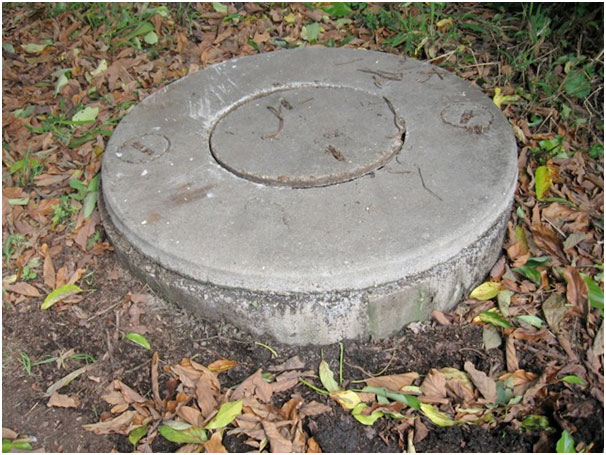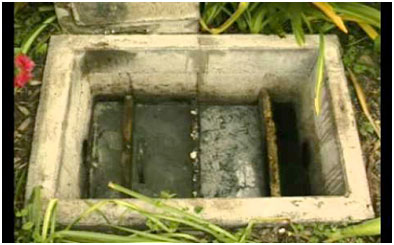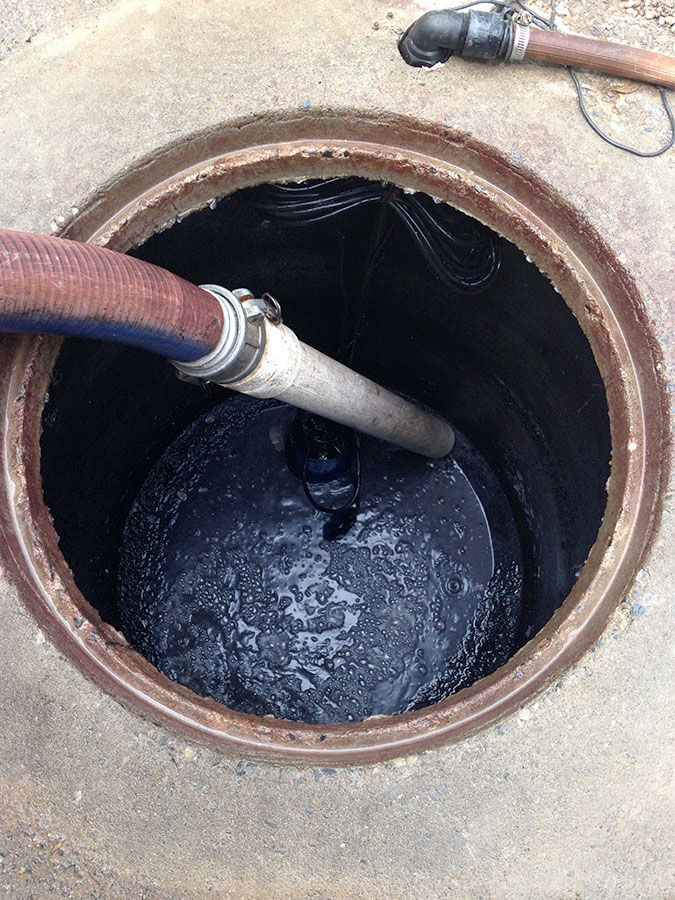How do you know what type of Septic Tank you have? We will talk about conventional systems with Septic Tanks and Absorption Trenches, Grease Traps and Grey Water (Sullage).
Most older residences have conventional systems compared to newer houses which have HSTPs.
Septic tanks are the larger of the tanks in your yard which can vary in sizes.
These tanks are solely for toilet waste, the solids are caught in the tank and partially digested by bacteria and the reminder settles to the bottom of the tank until it reaches a level where pumping is required.
The excess water from flushing is sent to absorption trenches under the ground which consist of gravel pits where they can dry out through evaporation.Pumping out time of these tanks vary with the size tank and the number of people in the household.

Grease Traps are solely to catch the kitchen grease from your sink or dishwasher and can be found normally outside the kitchen window.
They are normally about 350mm round or rectangular shape with 2 lids that join in the middle about 900mm x 500mm.
These grease traps should be cleaned often at least every 6 months to prevent excess grease build up in the trap and pipes causing blockages also creating bad odours.
The excess water from the grease trap flows into the Grey Water (Sullage)


Grey Water (Sullage) is a tank slightly smaller than your 1600 litre septic measuring about 1000mm across, the waste that comes into this tank is from showers, washing machines, laundry and bathroom sinks.
This waste is considered recycling water for irrigation please refer to our Grey Water page for proper uses.
It is sprinkled out onto grass or ornamental plants for irrigation, all hoses and sprinklers must be purple in colour to identify it is grey water and not fit for Human or Animal consumption.
Different Councils have varying guidelines for wastewater and this is only a guide and may defer from your council. Contact your local council to find out their regulations.
We can inspect and advise you about your tanks get in touch and book it in with us.
If you run a commercial kitchen, you'll know how important it is to have an efficient disposal system for fats, oils and grease (FOG). Grease traps are essential appliances that are designed to prevent FOG from blocking your plumbing system, but to keep your grease trap functioning properly, how often do you need to clean it? Let's take a look.
Over time, your grease trap will accumulate FOG in its tank, which will decompose over time and produce a foul rotting smell. This smell is hydrogen sulphur gas, which eventually turns into sulphuric acid; an extremely corrosive substance that can damage the walls and steel of the interceptor of your tank. To avoid having to replace your grease trap, it is essential to keep it clean.
Failing to clean your grease trap regularly can also cause blockages in the pipeline, as solid food particles that settle at the bottom of the tank will build up and fail to drain away. The overflow and backups that occur as a result can cause expensive damage, and your business will be subject to penalties from your local municipality.
The best way to keep your grease trap functioning properly is to have it cleaned regularly by an experienced professional. In between cleans, however, there are a few things you can do every day to keep your grease trap well-maintained.
One of the most effective ways of preventing FOG from flowing down the drains in your kitchen is to keep them out of the sink in the first place. Before you put any dishes in the sink, scrape as much food as you can off them with a rubber spatula.
Scraping your plates will get rid of most of the food, but there will still be some grease and food left, especially if you're cleaning your kitchen during busy periods. To filter any leftover grease and food, install screens under the three-compartment sink and the pre-rinse sink.
Cleaning up any spills as soon as possible will prevent grease from creating a slip hazard in your kitchen. Use towels to clean up any greasy food spills and throw them in the bin, as mopping them up will allow grease to enter your floor drains.
The frequency of commercial kitchen grease trap cleaning will depend on how often your kitchen produces FOG. On average, it's advised for cleanings to be carried out every one to three months to keep your grease trap functioning properly.
Check your grease trap regularly so you can learn how quickly it fills up, then base your cleaning schedule on that timeline. If you find that your grease trap fills up faster than usual (less than a month), it's worth considering upgrading it to a larger one.
At Wet Waste, we're experts in the removal of liquid waste from grease traps, sullage, holding tanks, septic tanks and much more. To learn more about our Gold Coast services or to request a quote, please don't hesitate to give our team a call on 1300 552 017 today.

Liquid Waste Removal and Septic Tank Cleaning on the Gold Coast, Brisbane, Redlands, Logan and Ipswich Shires.
Call Mark: 1300 552 017
E-mail: [email protected]